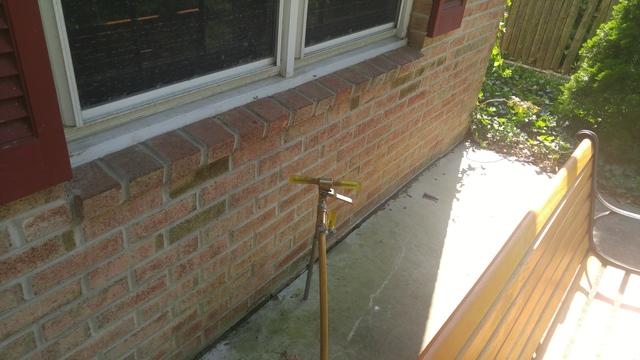Termites Find a Buffet in Helmetta, NJ
Challenge
I was recently sent to a home in Helmetta, NJ that had a severe termite infestation. When it comes to property damage and pests, no other insect or wildlife, for that matter, can come close to the damage caused by termites. While there are many pests that can damage structures, very few actually consume wood and other cellulose products as food. Also, unlike wildlife and most other insects, subterranean termites do their damage silently and out-of-sight. It is a rare event to actually see a termite since they live in the soil and, above ground, travel in mud tubes that they make with mud mixed with their own saliva and feces. Termites are soft-bodied fragile insects that can easily become dehydrated when directly exposed to air. To access a home, termites must either build mud tubes over the foundation or find a tiny crack in the foundation or floor. Any untreated wood that has direct contact with the soil is a potential termite “highway” into your home.
Unseen termite damage can take place for years before its finally noticed (when its often uncovered during a home inspection pending sale) because termites eat wood from the inside out, turning building materials into a hollow shell that can even collapse from its own weight. Finding termite damage is a late sign of an infestation, and no homeowner should wait that long before addressing an infestation. Finding termite damage is often the tip of the iceberg, and there is no such thing as just a little termite damage. If the infestation is not timely resolved, the colony will continue to grow and the property damage to your home will worsen.
With this particular home, there was significant damage to three walls in the living room (see photos including photo showing an open wall and damage to the sill plate and stud boards). With this slab foundation home, a large termite colony fed on cellulose material in the walls and the paper on the sheet rock (see photos of wall damage). Unfortunately, homes built on slab foundations are especially prone to termite damage. Slab foundations are often close to the soil, which means that termites can tube easily into the structure. Slab foundations inevitably have holes and cracks that provide a way into the structure. One especially susceptible location is where the garage slab and home are attached since there is almost always a crack between the two.
For this much damage to have occurred, and considering the height that the termites reached on this wall, these pest were likely were feeding off this home for a number of years. You need a large colony numbering in the thousands to produce this level of damage.
Solution
When treating for termites, it is critical that the termiticide reaches the termites where they are living — and that’s underground. I drilled a series of small holes through the concrete slab and the exterior concrete pad, and then injected the application into the soil using a slab injector (photo is the opposite side of this wall where I drilled and treated under the concrete pad). I also injected a foam termiticide into the walls to treat the stud boards and sill plate (see photo — the white material on the wood is the foam treatment). Finally, I treated the home’s perimeter as a preventative measure to protect the home from future termite infestations.
Unfortunately, this particular termite job was a lesson to treat termites at the first sign of a problem before there is significant property damage. Even better, homeowners should consider a Sentricon termite baiting system that forms an underground barrier around your home, stopping these destructive insects from reaching your home in the first place.





